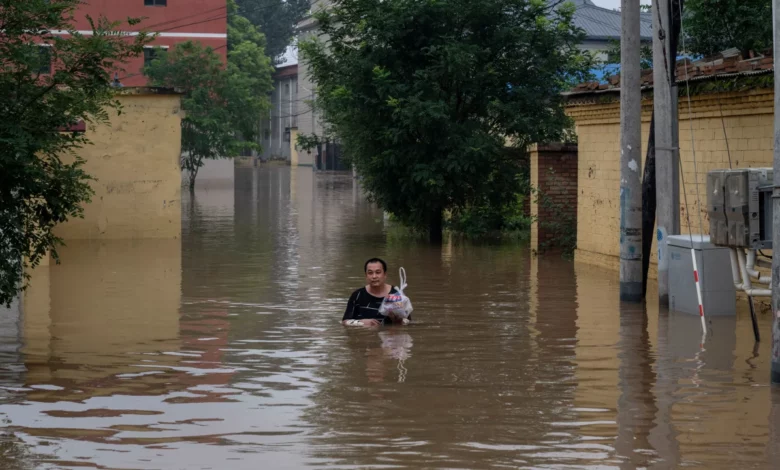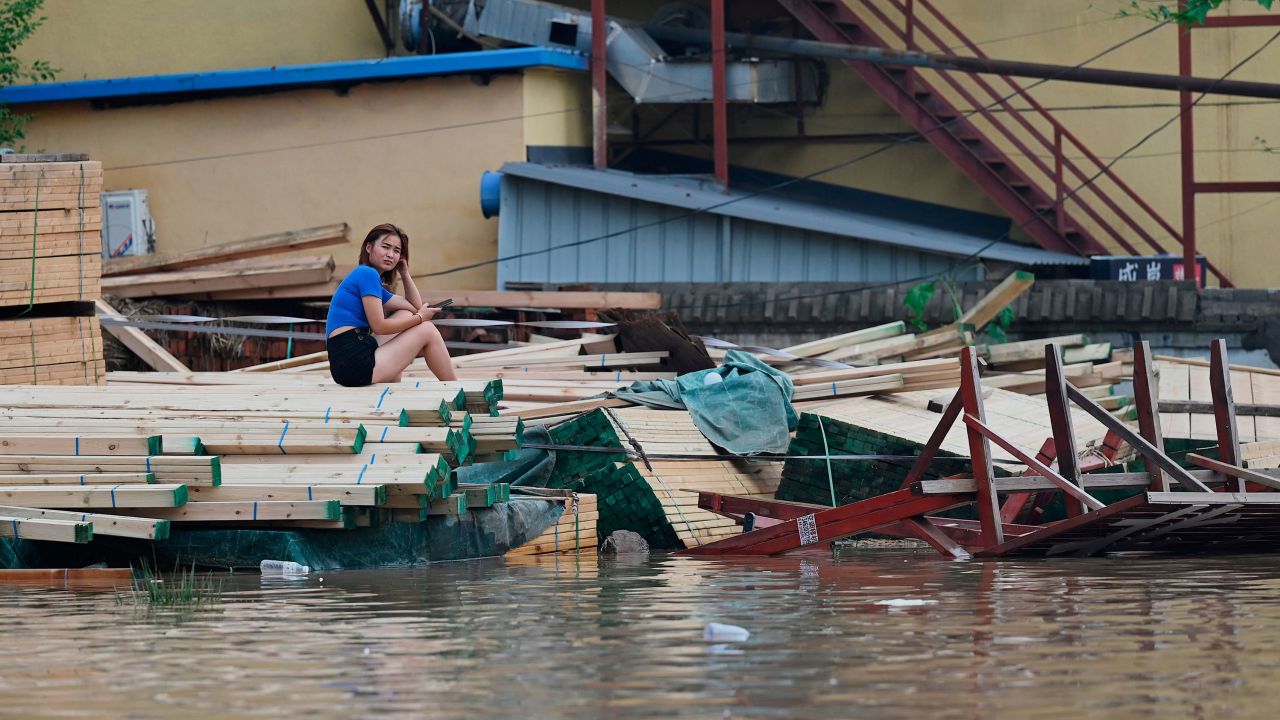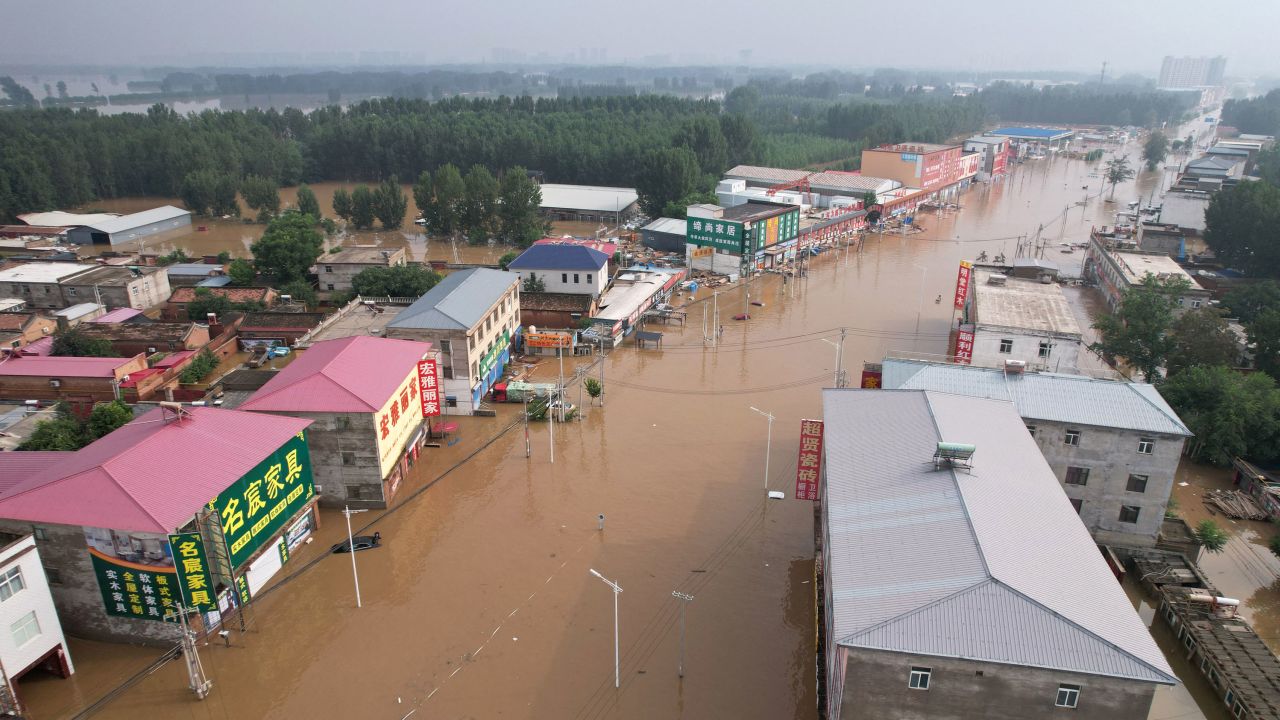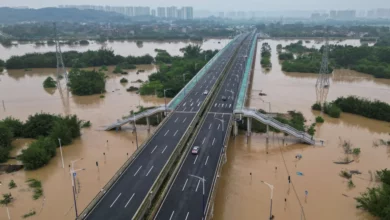
Rain from the remnants of Typhoon Doksuri slammed the northern province of 75 million, and the neighboring cities of Beijing and Tianjin starting last weekend, resulting in heavy flooding that stranded residents, washed away bridges and highways and left at least 22 dead.
The storm brought the heaviest rainfall Beijing has experienced in 140 years, marking a significant test of the region’s capacity to handle extreme weather that experts warn will become more frequent with climate change.
Evacuated residents have been transferred to makeshift shelters in hotels and schools, according to state media reports.
Social media posts show people dropping off donations to these shelters or setting up booths to offer food, while a district government within Tianjin called on residents to help house their displaced relatives and neighbors.
Many of those displaced in Hebei, an industrial and agrarian hub that is home to many of Beijing’s commuters, have been forced to leave their houses in areas where authorities have released pent-up floodwaters that had overwhelmed reservoirs and waterways.
As of Wednesday, authorities had released more than a billion cubic meters of floodwater into flood control zones, which include farmland and residential areas as well as lakes and wetlands, according to state media.

Flood control zones
Some 857,000 people have been relocated from these areas, state media reported. They are among the 1.2 million overall evacuated from the province, though it is not clear whether some people in flood control areas had been previously evacuated due to the heavy rains.
“A number of flood control zones have been activated one after another, resulting in relocations and relatively large economic losses,” Yang Bang, an official at the Ministry of Water Resources, told state broadcaster CCTV.
In the current situation, upstream reservoirs reached high water levels and urgently needed to be discharged, while at the same time, downstream rivers also faced a limited capacity to handle the flood flows, Yang said.
A comment from a provincial official, who suggested that flooding in Hebei was done to protect the Chinese capital, sparked backlash and debate about the handling of the flooding on social media.
Ni Yuefeng, the party secretary of Hebei province, was quoted in media reports calling on areas bordering Beijing to “resolutely serve as a ‘moat’ for the capital.”
In one widely-circulated article on social media, a blogger who claimed their family was in a flood-affected area of Hebei wrote, “I hope that from now on, we don’t have to be the ‘sacrifice’ for protecting the capital” – while some commentators debated this view.
While state media quoted other officials saying the drainage in Hebei played a role in alleviating the pressure on the flood basin, it also pushed back on the idea that one area was flooded to preserve another.
One state media report quoted hydraulic engineer Cheng Xiaotao saying this characterization was “not very accurate” in terms of how flood control operates.
No official data has yet been released on the costs of damage to homes and farmlands.
Under national rules, the cost of properties damaged due to the release of waters in flood control areas will be compensated by 70%.

Disaster response
The disaster points to the challenges facing the region – positioned within the Haihe river basin, where five rivers converge – when its come to severe rain and flash floods.
It is also the largest river system in northern China, covering a total area of 265,000 square kilometers, including 180 million hectares.
Shao Sun, a climatologist who studies meteorological hazards at the University of California Irvine, told CNN that northern China has faced intensifying extreme rain over the past decade and needs to enhance its disaster defense capabilities.
Sun explained since northern China’s terrain is higher in the west and lower in the east, rainfall usually accumulates on the western side of the North China Plain – where Hebei, Tianjin and Beijing are situated. The water is then drained eastward into the ocean.
For high-risk cities located near mountains, besides addressing drainage and flood prevention in urban areas, more attention is needed to mitigating the hazards of flash floods, including controlled water discharge protocols used to regulate water flow to reduce the impact on downstream areas, according to Sun.
“The drainage design standards in northern Chinese cities need further improvement to withstand the increasing frequency of extreme weather events caused by climate change,” he said.




